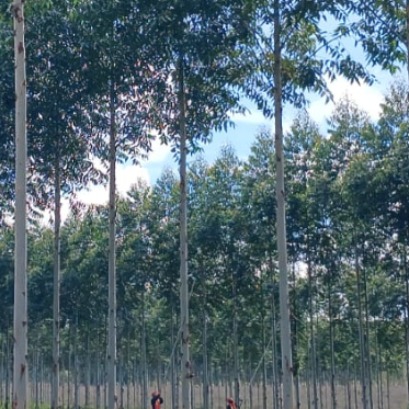
Deadly combo
The devastation of the natural forest not only occurs in Patagonia for fires. In the north of the country, deforestation advances because of a deadly combo: fire and unmoving clearing that causes companies to expand the agricultural border, especially for extensive livestock and soybean sowing.
According to a report by the NGO Greenpeace, 119,886 hectares were dismantled in northern Argentina. But the amount of hectares of natural mountain rises to 149,649 if those that suffered the consequences of forest fires are added. It is not a current phenomenon: in the last quarter of the century the loss of native forests in the country was around 7 million hectares, according to statistical data of the National Forest Directorate. The loss of native forests, in addition to a negative incidence in the landscape damages, because they are fundamental for water regulation; the conservation of biodiversity, soil and water quality; carbon fixation and diversification of flora and fauna. Having less native forests, therefore, causes loss of biodiversity, reduction in the ability to mitigate climate change, generates hydrological changes with losses in the productive capacity of soils and increased the risk of floods; and in general the decrease in the provision of ecosystem services to society, as mentioned by the website of the Ministry of Environment of the Nation before the current national government degraded it to the sub -secretariat range. Deforestation means more climate change, floods, desertification, evictions of peasant and indigenous communities, disappearance of endangered species and diseases, ?says Greenpace. This environmental problem is also legal, because the forests law, sanctioned in 2007, is permanently violated by the laxity of the controls of the competent authorities. In addition, fines are so low that unscrupulous entrepreneurs should be disassemble deforestation, achieving a balance between environmental preservation and productive development of natural resources, for which the competent- national and provincial authorities- a political will in the conviction that the defense of natural forests and the environment in general is a contribution to improve the quality of life of people and an indispensable protection of the flora and native fauna is required.
IT MAY INTEREST YOU
 Paraguay | The plantations became instruments of territorial development and the generation of decent employment, INFONA highlights.
Paraguay | The plantations became instruments of territorial development and the generation of decent employment, INFONA highlights.
Plantings in different phases, control of ants and weeds, pruning and thinning, mechanized harvest, technology applied to the field and complete integration of the production cycle were part of the CREA Forestal proposal in its Technical Update Conference – JAT Forestal 2025. The event took place on Friday, November 14, at Estancia Ñemity, located in San Juan Nepomuceno, Caazapá, where agricultural producers, technicians, contractors, students and companies in the sector met to observe the forestry business of the future in action.
 Missions | New illegal felling in the Piñalito Provincial Park in San Pedro reveals the silent expansion of deforestation in protected areas
Missions | New illegal felling in the Piñalito Provincial Park in San Pedro reveals the silent expansion of deforestation in protected areas
The advance of deforestation on protected areas was once again evident this week in the Piñalito Sur Provincial Park, in San Pedro, where the Ministry of Ecology and Renewable Natural Resources confirmed a new case of selective illegal logging. The event occurs in a context of growing concern about the fragility of the environmental control system in rural and border areas, where the scarcity of resources, personnel and logistics limits the capacity of surveillance against criminal organizations organized to steal native woods and market them on the black market in connivance with sawmill owners.
 The second largest wetland in South America is located in Argentina: what is it?
The second largest wetland in South America is located in Argentina: what is it?
Argentina has national parks that place it in a unique position within South America, competing with 300 others. Which is the largest? South America is home to more than 300 national parks, but many go unnoticed. There are extensive wetlands that have been the subject of major ecological restoration projects, to coastal mountains with deep indigenous heritage. Today we tell you the case of one located in Argentina.





















